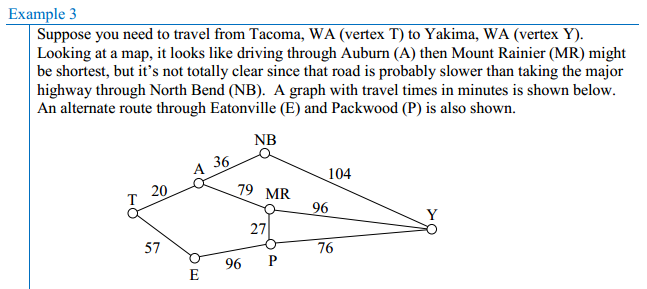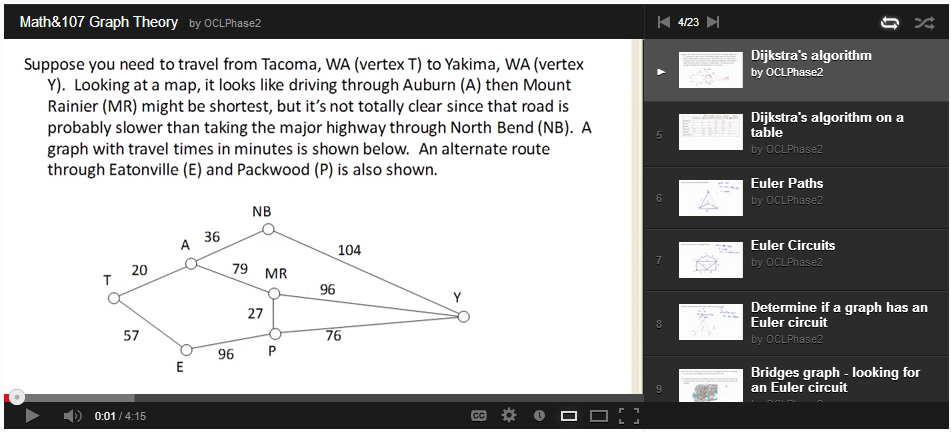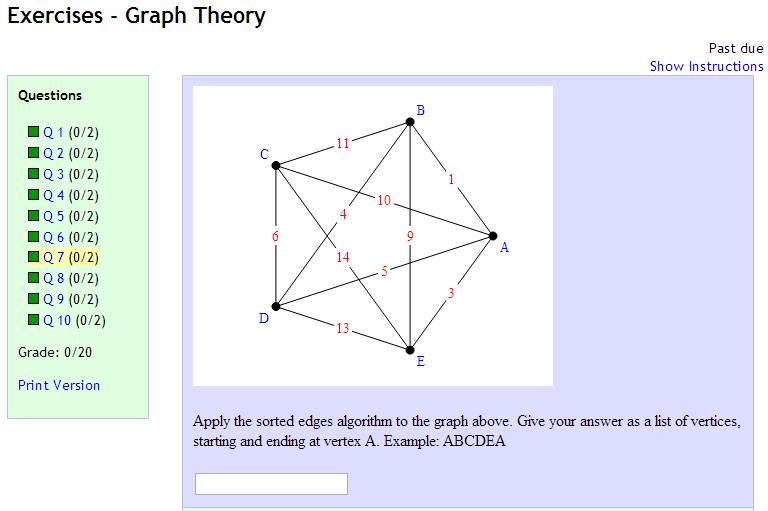MATH 107 – Math in Society
The purpose of this course is to expose you to the wider world of mathematical thinking. There are two reasons for this. First, for you to understand the power of quantitative thinking and the power of numbers in solving and dealing with real world scenarios. Secondly, for you to understand that there is more to mathematics then expressions and equations.
Design Features:
The core course is a complete, ready to run, fully online course, featuring 9 topics: Problem solving, voting theory, graph theory, growth models, consumer finance, collecting data, describing data, probability, and historical counting. Additional optional topics are provided. The course materials can easily be used with a face-to-face course.
Each topic features:
- Readings from a complete textbook, available in printed form for ~$15, or online for free.
- A playlist of videos, corresponding to the examples in the text.
- Exercises are available in the book, or algorithmically generated online homework and quizzes are available on WAMAP.org (for Washington faculty) or MyOpenMath.com (for everyone else).
- A writing assignment, requiring the students to think beyond calculations. For example:
Find an article in a newspaper or magazine (or the online equivalent) describing a recent study in which the researchers collected data through observation or an experiment to draw a conclusion. A simple poll (like “43% of Americans like to eat sushi”) is not sufficient; you should be looking for something describing a significant research study. Some examples (don’t limit yourself to these):
- an experiment testing a new drug or medical procedure
- a study linking a food or exercise with causing or reducing the risk of a disease
- a study about how some new teaching approach improves learning
- a study about how people behave (example: a study showing incentives can cause us to be less efficient)
Create a new thread in the discussion forum. In it:
- Give a brief summary of the article’s findings (5 pts)
- Discuss whether the article provides enough information to determine the validity of the conclusions (5 pts)
- Whether there is information that would be useful that was left out of the article (5 pts)
- A list of things that are missing from the article that would help you determine the validity of the study (4 pts)
- Be sure to cite the source of the article that you base this on. Include the web address to the specific article if the article is online. Include the article title, source, and date if the article is not online. (+1 pts for including, -10 pts if missing)
- For many topics, some in-class activities and paper quizzes are available. The textbook includes exploration questions which can be used to guide in-class discussion or for group activities.
Student feedback on this course:
“I was fearful about taking a strictly “on-line” course, especially one dealing with math, since I haven’t taken a math course in over 30 years and the on-line option was very new to me. Your course was so well organized I found it to be incredibly easy to follow. Your clear objectives, requirements, grading system, and quick replies made this one of the most pleasurable classes I have ever experienced. I found the use of videos to supplement the text extremely helpful.”
-Tammy Questi, RDH, student in David Lippman’s Winter 2013 Math&107 course run in WAMAP.org



